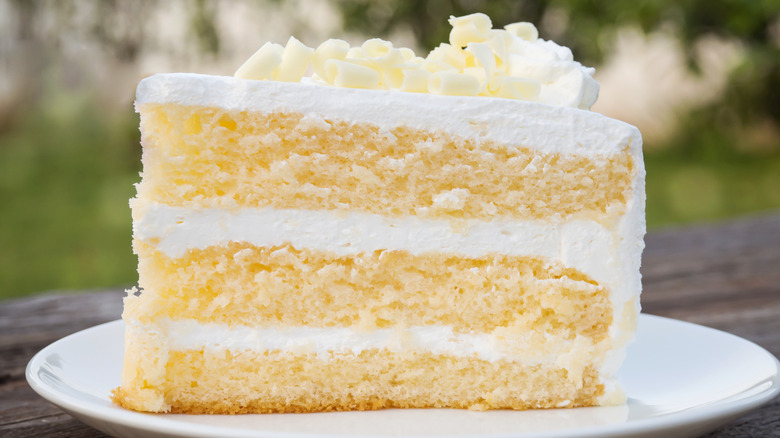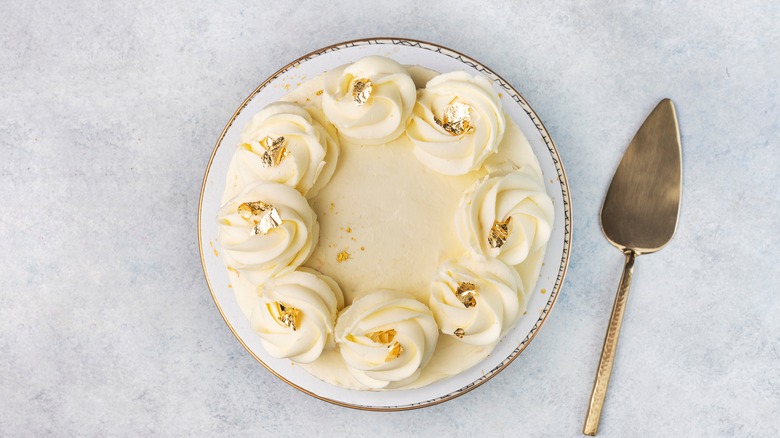The Rich Ingredient That Sets French-Style Buttercream Apart From All Others
Frosting is a food that evokes the inner child in all of us. It's impossible to resist licking the silky, sugary goodness off your fingers or spatula, while hoping that no one sees. Chocolate, vanilla, strawberry, hazelnut, you name it; any and all frosting flavors are delicious. But besides different flavors, there are also other types of frostings. Think of it like buying a car, you could get a basic Volkswagen Jetta model in black, white, or grey, but you could also add a sunroof or heated leather seats (yes please). Frosting, just like cars, becomes luxurious with the more bells and whistles added in.
In the world of frosting, there's the generic store-bought containers, classic American style-buttercreams, and European-style buttercreams. These frostings are not interchangeable, as each type has different properties that lend themselves to different types of desserts. European buttercreams are, without a doubt, the most complicated of the bunch and can leave you wanting to pull your hair out if you don't follow the recipe closely. In the family of European buttercreams, there are Italian, Swiss, and French styles. The crown jewel of them all? French-style buttercream. Freelance recipe developer and author of the "Dessert Person" cookbook Claire Saffitz proclaimed French-style buttercream to be "The most decadent of all frostings" (Via Bon Appetit).
It's all in the yolk
So what set sets French-style buttercream apart from all of its contemporaries? Egg yolks. The addition of egg yolks makes the frosting undeniably rich and luscious. It's almost custard-like and is perfect for frosting cupcakes and cakes. French style is the way to go whenever you want the frosting to be the star of the dessert.
But French-style buttercream doesn't hold up for creating delicate cake designs. That's when you want to whip up its cousins, Italian or Swiss-style buttercreams that are meringue-based. They utilize egg whites to create a stiff meringue, while the French use yolks. That is the key difference! With all of these frostings, the most crucial part is ensuring all ingredients are at room temperature. If the ingredients are too cold, the frosting will break. If the ingredients are too hot, the frosting won't hold together. It's a delicate act. French-style buttercream has the added difficulty of tempering the egg yolks with boiling sugar and hoping the yolks don't scramble. It's not for the faint of heart.
At the end of the day, all that matters is that a cake is covered in sugary frosting. Right? Whether it's American, Swiss, Italian, or French-style buttercream, it's still a step above store-bought (which is still perfectly delicious). But if you're feeling brave, take a swirl at making French-style buttercream and enjoy the luxurious results!

